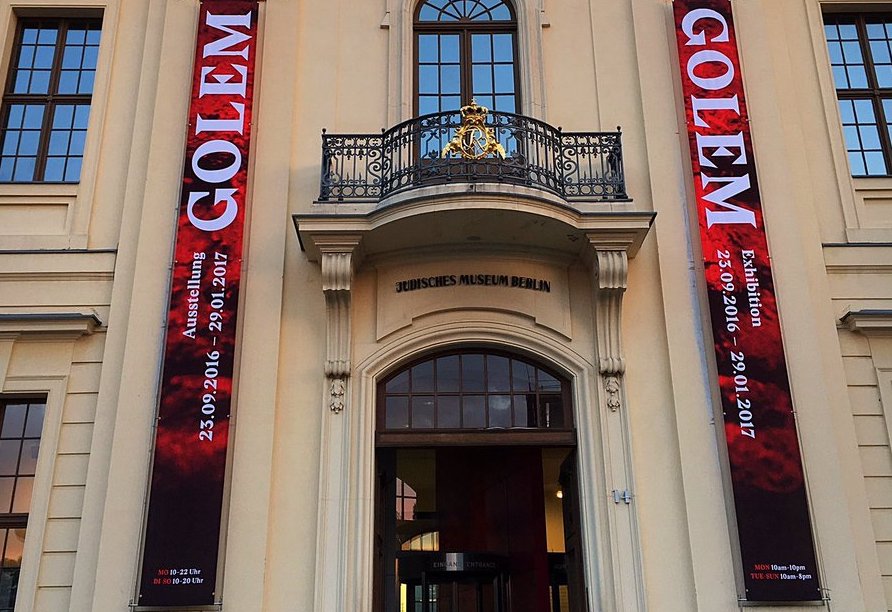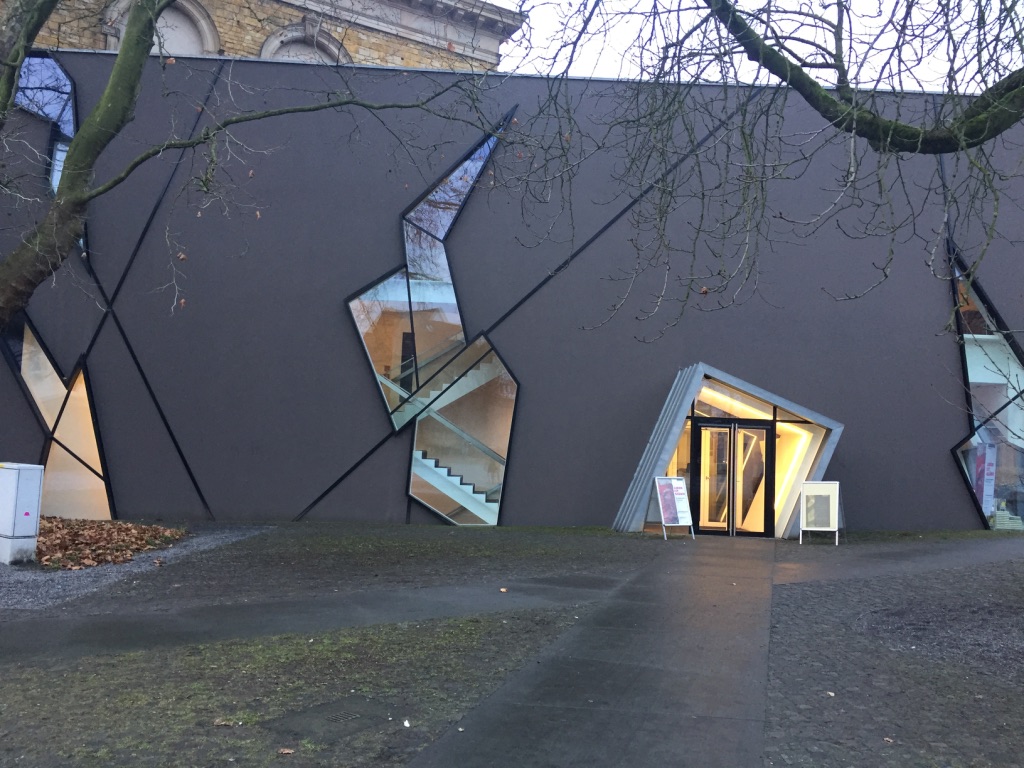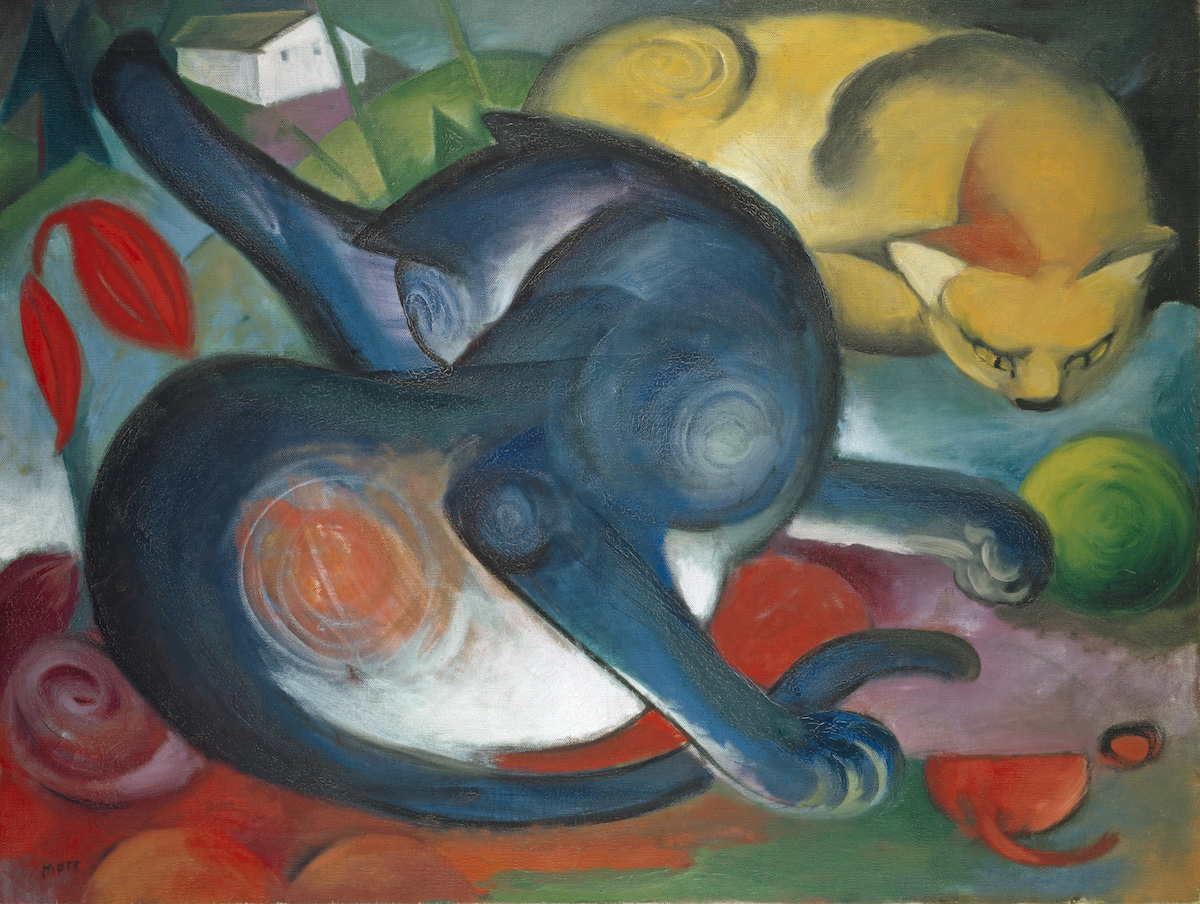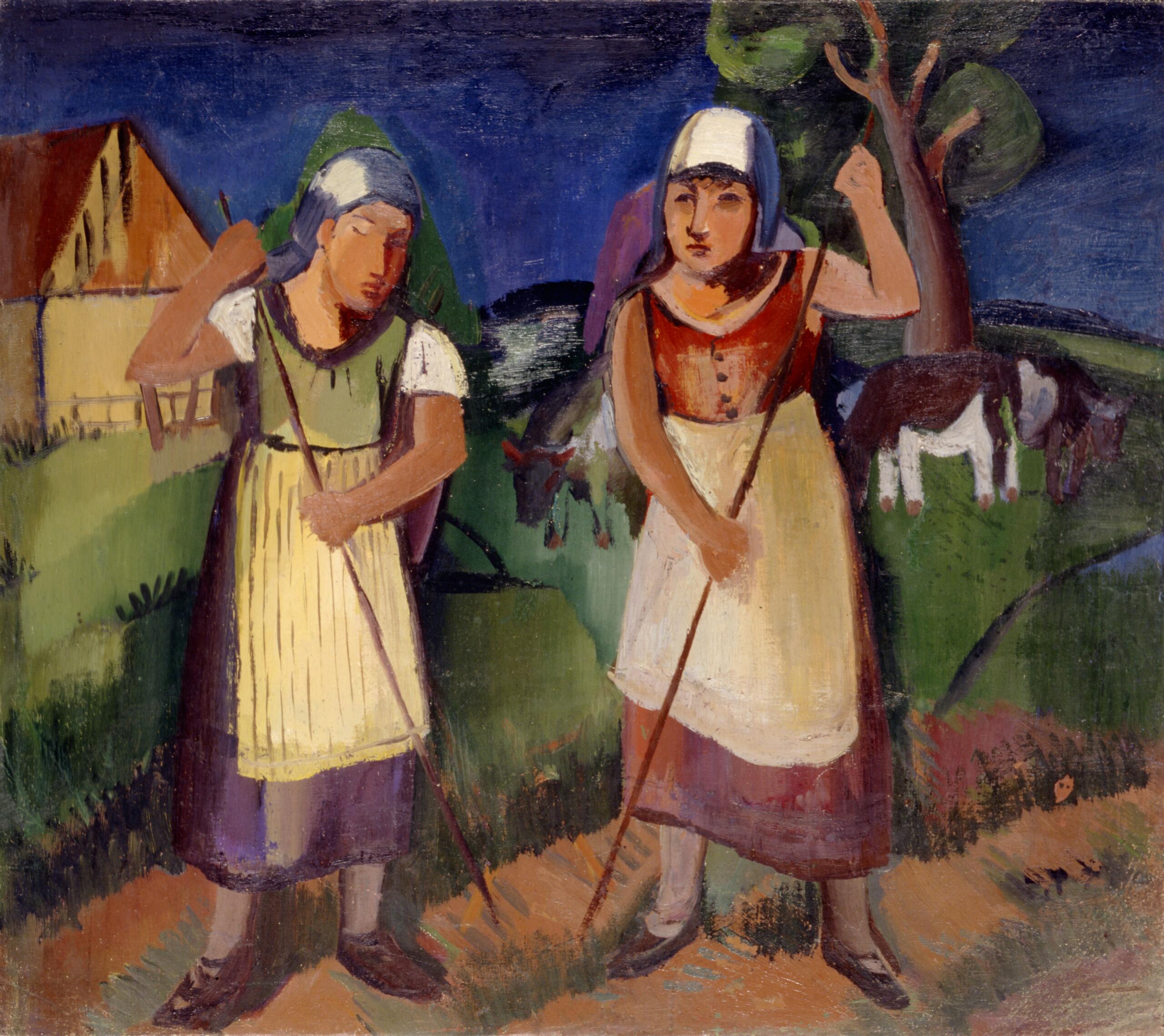Degenerate Art

“Golem”
Jüdisches Museum Berlin, Berlin (Germany)
Jüdisches Museum Berlin
Lindenstraße 9-14, Berlin, Germany
Fritz Ascher's monumental painting "Golem" from 1916 is part of the exhibition "Golem" at the Jewish Museum Berlin (September 23, 2016 - January 29, 2017).websiteThe myth of the human being that can create new life is the central theme of the large thematic exhibition "Golem" at the Jewish Museum Berlin. Until today the most prominent Jewish legendary figure inspires generations of artists and writers. The exhibition presents the Golem from its Jewish mystical source to popular narratives for film or in artistic and digital media. Formed in clay or dust, a being is brought to life by mystical rituals including Hebrew letter combinations. Created by a human being, the Golem becomes a helper, a companion or the savior of a [...]

“Leben ist Glühn” Der Expressionist Fritz Ascher
Felix-Nussbaum-Haus, Osnabrück (Germany)
Felix Nussbaum House / Museum of Cultural History
Lotter Str. 2, Osnabrück, Germany
The first ever Fritz Ascher Retrospective is on view at the Felix-Nussbaum-Haus in Osnabrück from September 25, 2016 until January 15, 2017. website link This first comprehensive retrospective of Fritz Ascher's art shows a representative group of ca. 80 works (30 paintings and 50 works on paper), which span his whole oeuvre from first academic studies to monumental Expressionist figure compositions to late landscapes. The emotional immediacy, intensity and authenticity of Fritz Ascher’s work insures its relevance for today’s viewers. At the same time, it raises interesting questions about individuality and artistic integrity in response to conditions of extreme duress and to political tyranny. The exhibition is under patronage of the German Minister of Culture and Media Prof. Monika Grütters. [...]

“Leben ist Glühn” Der Expressionist Fritz Ascher
Kunstsammlungen Chemnitz MUSEUM GUNZENHAUSER, Chemnitz (Germany)
Museum Gunzenhauser
Stollberger Str. 2, Chemnitz, Germany
The worldwide first Fritz Ascher Retrospective is on view at the Kunstsammlungen Chemnitz - MUSEUM GUNZENHAUSER from March 5 to June 18, 2017. (website link) The main focus of the presentation at the Kunstsammlungen Chemnitz - MUSEUM GUNZENHAUSER is on the artist's important early masterworks like "Golgatha" (1915), "Bajazzo and Artists" (ca. 1916) and "The Tortured" (ca. 1916). For the first time ever, Fritz Ascher’s “Golem” from the collection of the Jewish Museum Berlin will here be reunited with other works the artist created between 1913 and 1933. The Kunstsammlungen Chemnitz is home to an important collection of German Expressionism, dominated by artwork of the locally founded Expressionist group Brücke and especially Karl Schmidt-Rottluff, who grew up in Chemnitz, along [...]

CASTAWAY MODERNISM. Basel’s Acquisitions of “Degenerate” Art
Presentation by Dr. Eva Reifert, Kunstmuseum Basel
followed by discussion with Rachel Stern
ONLINE
VA, United States
The Kunstmuseum Basel’s department of classic modernism houses one of the most prestigious collections of its kind. It was in fact assembled at a comparatively late date. In the summer of 1939 — shortly before the outbreak of World War II — Georg Schmidt (1896–1966), the museum’s director at the time, managed to acquire twenty-one avant-garde masterpieces all at once. The works were among those denounced in 1937 by Nazi cultural policy as “degenerate” and forcibly removed from German museums. The Third Reich’s Ministry of Propaganda correctly assumed that a portion of such works would find buyers abroad and bring in foreign currency. In this way certain artworks deemed “internationally exploitable” reached the art market via various channels. [...]

„I’m always on the go…” –
The painter Franz Domscheit / Pranas Domšaitis (1880-1965)
Lecture by Jan Rüttinger, Lüneburg (Germany)
ONLINE
VA, United States
Searching, wandering, not arriving - this is how the person and art of Franz Domscheit/Pranas Domšaitis can be characterized. Born into a German-Lithuanian family as the son of a farmer and innkeeper, it was primarily his Lithuanian origins that interested him. The early landscape and cultural impressions of his homeland, Prussian-Lithuania, at the interface of German and Lithuanian culture, shaped his work throughout his life. Landscape is one of the painter's main themes, who is primarily perceived as an expressionist. Image above: Franz Domscheit, Two Peasant Women, 1930s. Oil on canvas. Copyright National Lithuanian Art Museum. Trained at the Königsberg Art Academy by Ludwig Dettmann, among others, Domscheit then moved out into the world. Berlin, [...]

Samson Schames (1898-1967): Family and Friends
Conversation with Natalie Green Giles, James McCaffrey and Charlie Scheidt.
Moderated by William Weitzer
ONLINE
VA, United States
In this virtual event, a distinguished panel comprising family members, friends, and their descendants from New York share memories of the German-born artist Samson Schames (1898-1967). His work, which blends modernist aesthetics with spiritual and historical depth, is recognized for its innovative technique and poignant reflections on exile, memory, and identity. Born in Frankfurt am Main, Germany, he fled Nazi persecution to England in 1939 and later emigrated to the United States with his future wife, Edith, in 1948 and 1947. Image above: Samson Schames, Blowing the Shofar, c. 1956. Shards of glass, polychrome, layered in relief, 25.4 x 29.7 in. (64.5 x 75.5 cm). Jewish Museum Frankfurt A short film created by the Leo Baeck Institute-New York/Berlin introduces the [...]


